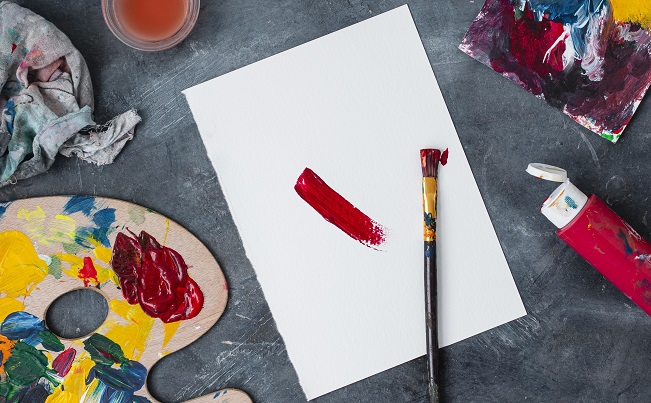Imagine making a work of art today, and two decades later it is still as colourful and gorgeous as the day you created it. No fading, smudging, or smearing—it’s as if it’s locked in time. How did you accomplish such a feat? The answer is based on the type of paper you use. Choosing the right type of paper, however, can be a real challenge for newbies starting from scratch. Therefore, we’ll delve into the various types of art papers available to you and help you select the one that best suits your needs.
A Breakdown of Different Art Papers
Unleash your inner artist and preserve your piece of art with quality art paper. Before narrowing down the most common types, keep in mind to go for acid-free alternatives, as otherwise the paper might turn yellow over time, affecting the image. You should also consider its surface texture, particularly if you plan to work with many coatings. It is tough to put additional layers of colour on top of coloured paper. To simplify the process, use paper with adequate tooth or texture.
Sketch Paper

A sketch paper is designed for sketching, drawing, and doodling. It is usually heavier than the conventional type, offering a stable surface for pencil, charcoal, ink, and other dry media. Sketch art paper comes in a variety of sizes and textures to accommodate different preferences and demands. The ideal option for your media will be determined by the type of dry materials you utilise; medium-weight papers (about 80 pounds) with a light texture and ivory or dazzling white colour are the most preferred.
Thin paper, such as 20-pound copy paper, works well for doodles and sketches, but for drawings that require a lot of shading, blending, and erasing, use heavier paper above 80 pounds. Pages with a slight roughness are ideal for coloured pencils, while an overly smooth paper makes it difficult to achieve uniform colour. Choose toothy paper weighing more than 100 pounds, as charcoal and dried pastels require a lot of erasing.
Oil pastels work best on smooth paper and never completely dry, thus thick paper weighing up to 300 pounds is great for layering and blending colours. Consider the type of media you’ll be working with, the size you require, and the texture you desire when selecting sketch paper. If you’re using graphite or charcoal, seek for paper with a toothy surface that can hold the material nicely. If you prefer pen and ink, a smooth surface is best. Also, consider the weight of the paper, as heavier paper is more durable.
Watercolour Paper
Watercolour paper is great for painting with watercolours, but it also works well with acrylics, pastels, and other materials. It has a distinct texture that absorbs paint effectively, making colours appear brilliant and attractive.
The hot-pressed watercolour paper has a smooth surface and can be used for detailed work such as pen and ink, but it is not ideal for wet-on-wet painting or glazing.
On the other hand, cold-pressed watercolour paper has a somewhat rough surface that gives paintings a velvety appearance, however, it may be better suited for dry brush methods or glazing. The rough watercolour paper has a very rough surface that is ideal for wet-on-wet painting and dry brushing, but it could be better suited for scraping out rocks or removing undesirable paint. It is also useful for glazing.
When narrowing down your options, take into account the type of watercolour technique you intend to employ. If you want something versatile, cold-pressed is an excellent option. If you’re doing a lot of detail work, hot-pressed paper is the best buy. Rough paper will give you a more textured and organic look.
Watercolour art papers can be distinguished by their weight as well. Lightweight papers are less expensive but require stretching before use. Heavyweight papers may withstand numerous washes and don’t require stretching unless excessive water is used. Stretching is required for any paper weighing less than 200 pounds/425 grams per square metre.
Acrylic Paper

Acrylic paper for painting features a textured surface that resembles the teeth and drag of stretched canvas. This paper increases the performance and longevity of acrylic paint. When picking the appropriate acrylic pad, keep the surface texture, thickness, size and quality in mind.
Choose a surface texture paper that matches your painting style and technique. Take into account the thickness of the paper, as thicker sheets can withstand more layers of paint and are less likely to buckle or warp. Select the size that best suits your painting style and project requirements. Invest in high-quality paper to produce more visually appealing and long-lasting artwork.
Mixed Media Paper
Mixed media surfaces are relatively new in the world of paper. Manufacturers aimed to produce paper that could survive the many media processes employed by contemporary painters. The result is a surface that resembles watercolour in appearance while having a vellum drawing surface.
























